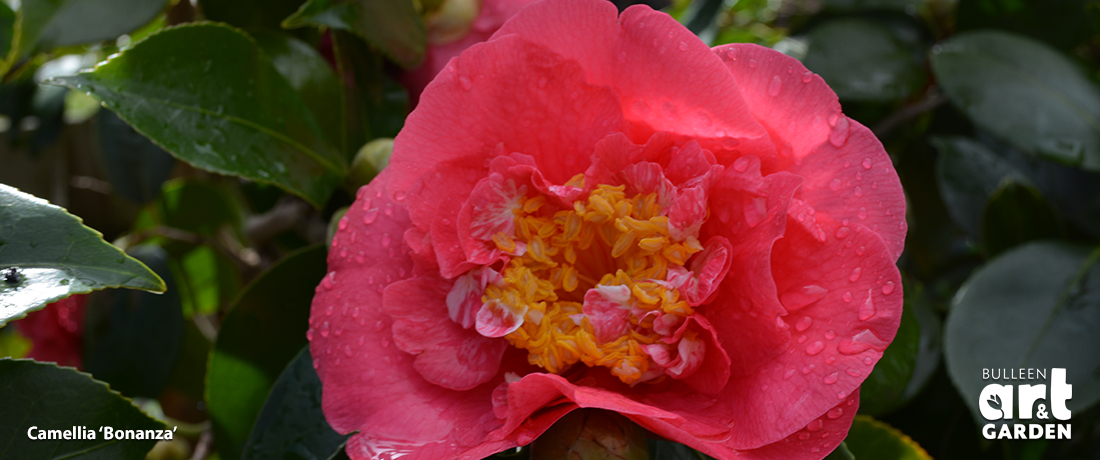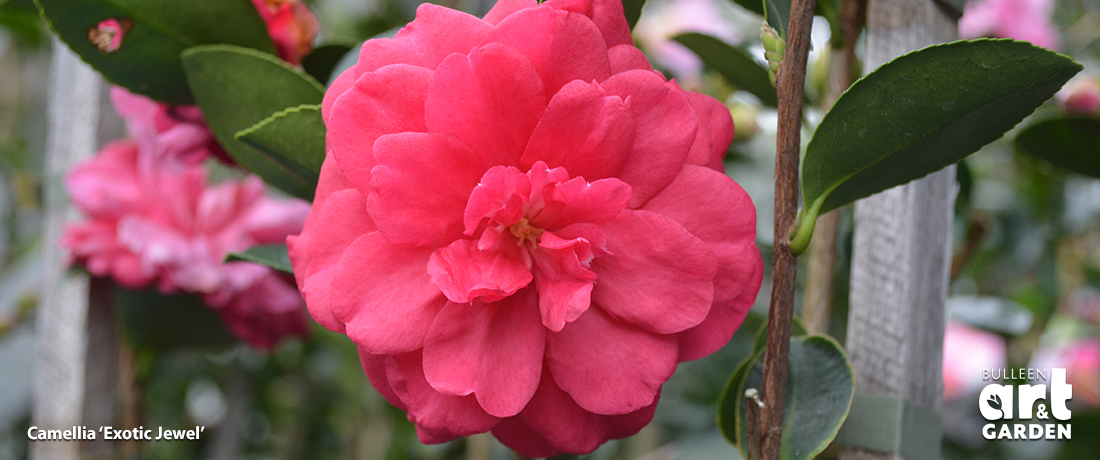
 Important note about plant availability. Important note about plant availability.There are hundreds of factsheets on our website provided for your information. Not all plants will be available at all times throughout the year. To confirm availability please call (03) 8850 3030 and ask for the nursery. |
Camellias are one of the most enduring and versatile evergreen garden plants. Their garden value is further enhanced due to their winter flowering season when most other plants are either in decline or dormant. Many cultivars make wonderful potted specimens. They are equally at home as feature specimens, hedging or screening and background shrubs. There are even dwarf cultivars available.
Camellia Requirements:
Once established camellias have proven to be one of the most drought tolerant plants available. Preferably, most cultivars should be sited with protection from the extremes of the afternoon summer sun and hot winds. Overhead shade cover from larger specimen trees can suffice. Many of the white and lighter flower coloured cultivars are better grown in an easterly aspect so that the flowers are not spoilt (browned off) by winter rains and frost. Many of the sasanqua varieties are quite sun tolerant however, attention to detail should be given to adequate watering and mulching during summer months.
Fertilising
Camellias have a low metabolism, in that their sap movement and flower development is very slow. Using a proprietary camellia fertilizer, or an all purpose organic fertiliser, the optimum feeding regime is after flowering, when they are putting on new growth. The nitrogenous Blood and Bone can also be applied just after the flowering cycle has finished.

Pruning & Moving
Many people are not aware that camellias are at their most dormant stage during their flowering period. If you need to move an established plant, just at the end of this period would be ideal, before the new season’s growth has started. Camellias are one of the most prune-able plants and if required, this should also be done just at the end of the flowering cycle. Camellias only have one growth spurt a year, so timing is important. So too is the after-care, such as mulching, fertilizing and watering to ensure that the rejuvenation re-growth is maximized. Camellias should be periodically pruned otherwise they will become too rangy and the size and quality of the flowers will diminish.
Camellias in Pots
Most of the japonicas, many hybrids and the smaller upright growing sasanqua camellias make ideal container specimens due to their refined root systems and slow growth rates. The Reticulata cultivars are not suitable for pot culture.
Camellias do not like to be ‘over-potted’. Camellias like to be potted up in stages.When a small plant is repotted into a new, larger pot the root ball is initially surrounded by a large amount of fresh potting mix containing no roots. As there is nothing in this area to draw water, the potting mix around the outside of your pot will tend to hold water and this can cause the the adjacent roots to rot. If you want to plant a camellia in a larger, ornamental pot use the ‘pot within a pot’ method and increase the size of camellia-housed pot incrementally over the seasons until it can be planted out in the larger pot in its own right.
For all potted camellias, a premium quality potting mix should be used. Re-potting can be carried out at the end of the flowering cycle. A potash-enriched liquid fertilizer is also recommended to fertilise camellias during their growing season as it can be taken up more readily by potted plants.
Pests and Diseases
Generally, in Victoria camellias are not afflicted by many pests and diseases. However, from time to time, pests like bud mite, aphids, caterpillars etc. can be a nuisance. Possums may also need to be deterred as they can find the flower buds and foliage attractive. Go to Pest and Diseases article in the Camellias Victoria website for a more complete reference to these and more potential problems.
Leaf oedema: those bumps and lumps usually on the underside of the leaf – especially noticeable in Marge Miller. These occur on hot days when the plant is transpiring heavily and then a hot wind springs up, the stomata rapidly close causing the cells around the stomata to pop – leading to scar tissue – and hence those bumps. Nothing to worry about.
